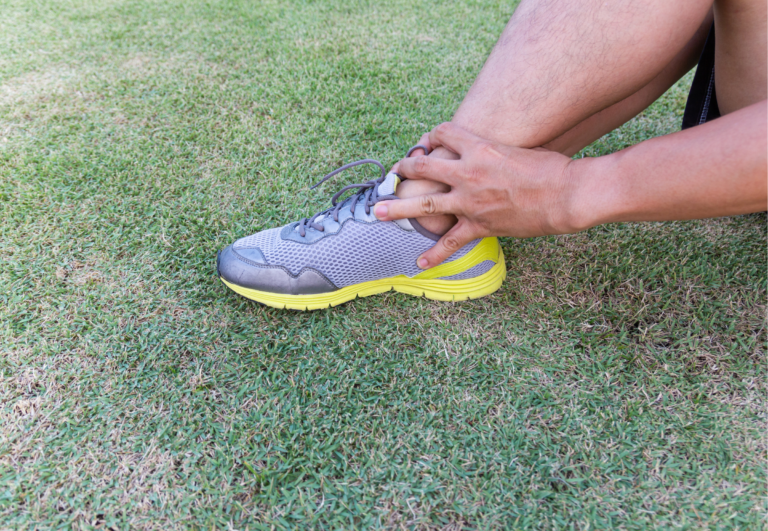Headlamps and Lighting for Trail Running: Essential Nighttime Gear Tips
Navigating trails at night requires reliable lighting, not only to ensure safe footing but also to maintain a consistent pace during trail running. An ideal headlamp for trail and night running should provide ample brightness, a comfortable fit, and a long battery life to withstand the duration of your run. As a UESCA certified running coach, I’ve seen firsthand how proper lighting can make the difference between an enjoyable, secure night run and one that’s fraught with potential hazards.
When choosing a headlamp, consider factors such as beam distance and type, weight, and whether it’s tailored for high-impact activities like running. Look for a headlamp with a wide beam for peripheral vision and a spot beam to see far ahead on the trail. Some top models also offer various lighting modes, which can be very useful in adjusting to different conditions you may encounter on your run.
Lastly, comfort cannot be overstated. A headlamp should fit snugly without bouncing or slipping, which can be distracting and dangerous when navigating technical terrain in the dark. Quality headlamps are designed to be lightweight and ergonomically balanced with straps that can be easily adjusted for a secure fit, ensuring a seamless integration into your night running gear.
Understanding Trail Running Headlamps

In trail running, a headlamp is indispensable for safety and visibility. Choosing one involves understanding lumens, beam distance, and light modes.
Headlamp Basics
A headlamp for trail running should provide sufficient brightness and beam distance to navigate in the dark. Lumens measure the light’s brightness, with trail running headlamps typically ranging from 50 to 900 lumens. Here’s a basic overview:
- Lumens: This is the measure of a headlamp’s output. The more lumens, the brighter the light.
- Beam Distance: This refers to how far the light can illuminate. It’s essential to ensure visibility of the trail ahead.
- Light Modes: Multiple settings (e.g., high, medium, low, blink) allow for versatile use and battery conservation.
| Light Mode | Lumens | Beam Distance | Use Case |
|---|---|---|---|
| High | 400-900 lm | Up to 100+ m | Technical terrain and challenging conditions |
| Medium | 200-399 lm | Up to 70 m | Normal trail running |
| Low | 50-199 lm | Up to 30 m | Minimal lighting needs, preserving battery |
Advanced Lighting Technology
Modern headlamps often incorporate advanced features:
- Reactive Lighting Mode: Adjusts brightness automatically in response to ambient light, optimizing battery life.
- Ambient Light Sensors: These sensors detect surrounding light levels and adjust the headlamp’s output accordingly.
- Lighting Technology: LED technology is common due to its durability, efficiency, and capability to provide consistent light output.
Selecting a headlamp with these advanced features can enhance your trail running experience by providing adaptive and efficient lighting.
Key Features and Specifications

When selecting a headlamp for trail running, key features such as brightness, beam type, battery life, and comfort determine performance in nighttime conditions.
Brightness and Beam Type
The primary function of a headlamp is to illuminate the trail ahead. Brightness is measured in lumens, and for trail running, a headlamp with a range of 200 to 800 lumens typically suffices. It’s important to consider the type of beam a headlamp casts.
A spotlight beam is focused and long-reaching, ideal for seeing far ahead on the trail. A floodlight beam, on the other hand, provides a broad and diffused light, which is better for illuminating the immediate vicinity. Some headlamps offer a combination of both beam types for versatility.
- Spotlight: Long-distance visibility.
- Floodlight: Wide, immediate area illumination.
Battery Life and Power Source
Battery life is a critical feature for runners, influencing how long the headlamp can operate on a single charge or set of batteries. Look for a headlamp with a runtime that matches or exceeds the duration of your nightly run.
Headlamps may come with rechargeable batteries, often charged via micro-USB, or they might use disposable AAA batteries. Rechargeable headlamps can be more cost-effective over time and are generally more environmentally friendly.
- Rechargeable: More cost-effective, environmentally friendly.
- AAA batteries: Easy replacement, widely available.
Fit and Comfort
A comfortable fit is vital for distraction-free running. The best headlamps are lightweight and provide a bounce-free fit. They often feature an adjustable headband to secure the lamp comfortably.
Comfort is further enhanced by the overall weight of the headlamp; lighter models reduce neck strain and are less noticeable during vigorous activity. Look for a headlamp with adequate padding and a design that minimizes pressure points.
- Lightweight: Minimizes neck strain.
- Adjustable headband: Ensures a comfortable and secure fit.
Selecting the Right Headlamp for Trail Running
Choosing the right headlamp is essential for safe and enjoyable trail running at night. It’s important to consider the running environment, performance needs, and specific features like brightness, battery life, and water resistance.
By Running Environment
Trail Running: For trail running, you’ll need a headlamp that provides a broad and even beam to identify obstacles such as roots and rocks. A headlamp with at least 200-300 lumens is suitable for moderate trails, but I recommend one with up to 500 lumens for technical terrain.
Road Running and Other Outdoor Activities: A headlamp with a focused beam and fewer lumens—a range of 100-200—can suffice for well-lit roads and general outdoor activities. The emphasis here is on being visible to others rather than lighting up the path.
Based on Performance Needs
Brightness & Beam Type: Look for a headlamp with adjustable brightness levels and a beam type that can switch between floodlight and spotlight, ensuring versatility for various running conditions.
Battery Life: Long battery life is critical, especially for ultrarunning. A headlamp with at least 4 hours at medium settings is a good start, but consider models with extended battery packs or rechargeable options for longer runs.
Durability & Adjustability: A durable headlamp, preferably with water resistance, will withstand different weather conditions. Make sure the headband is adjustable for a secure and comfortable fit with your trail running shoes.
Safety & Versatility: Some headlamps come with added features like a rear red light for safety, and being versatile enough for activities beyond running can be a bonus.
| Feature | Trail Running (Technical) | Road Running & Other Activities |
|---|---|---|
| Brightness (Lumens) | 300 – 800 | 100 – 200 |
| Beam Type | Both Flood & Spot | Mainly Focused Spot |
| Battery Life | 4+ hours | 2+ hours |
| Durability | High with Water Resistance | Moderate |
| Adjustability | Essential | Less Critical |
Price and Value Considerations

When selecting a headlamp for trail running, the balance between cost and value is key. I advise runners to consider not just the purchase price, but also the long-term usability and durability of the headlamp, assessing how each option meets their specific night running needs.
Budget vs. Expensive Options
Budget headlamps often range in price from $20 to $50. They are typically sufficient for short, less technical night runs and usually offer lower light output and shorter battery life. Their affordability makes them accessible, but they may lack advanced features or durability.
In contrast, expensive headlamps can cost above $100, often featuring higher-quality construction, brighter lighting, and longer battery life. These headlamps provide better visibility and are designed to withstand rugged trail conditions, making them a worthwhile investment for serious ultrarunners.
Headlamp Price Comparison
| Budget Options | Price Range | Light Output | Durability |
|---|---|---|---|
| Standard Models | $20 – $50 | Up to 300 lm | Moderate |
| Advanced Models | $51 – $100 | Up to 500 lm | High |
| Premium Models | $100+ | 500 lm+ | Very High |
Analyzing Cost-Effectiveness
Cost-effectiveness isn’t just about the initial price – it’s about how the headlamp performs over time. Light output and burn time are important; a cheaper headlamp with a high burn rate might need frequent battery replacements, increasing the long-term cost.
For instance, a headlamp priced at $99.95 offering 500 lumens and a rechargeable battery is initially more expensive but provides significant value with its bright light and lower battery costs.
Headlamp Value Analysis
| Item | Criteria | Value Consideration |
|---|---|---|
| Light Output | 500 lumens+ | Necessary for technical trails |
| Burn Time | 50 hrs+ | Longer burn time reduces battery costs |
| Battery Type | Rechargeable | Cheaper in long run, environmentally sound |
| Durability | High quality | Withstands rugged use, longer lifecycle |
Investing in a high-quality headlamp ensures not only a more enjoyable and safe night running experience but also a cost-effective solution in the long haul. My experience suggests choosing a headlamp is a balance between upfront costs and the benefits of enhanced lighting and durability over time.
Reviewing Popular Models of Trail Running Headlamps

When selecting trail running headlamps, it’s vital to focus on luminosity, runtime, and fit. As an experienced trail runner and UESCA certified running coach, I’ve found these factors to be pivotal in performance and safety during nighttime runs.
Benchmarking Top Brands
Luminosity: For clarity on the trail, a headlamp with a high lumen output is crucial. The Black Diamond Icon 700 offers an impressive 700 lumens, whilst the Petzl Swift RL and BioLite HeadLamp 800 Pro further push the boundary with up to 800 lumens. However, more lumens typically mean more weight or shorter battery life.
| Model | Lumen Output | Weight | Battery Life |
|---|---|---|---|
| Petzl Swift RL | Up to 800 | Lightweight | Shorter |
| BioLite HeadLamp 800 Pro | Up to 800 | 2.75 oz | High=4 hrs |
Runtime: It’s frustrating when a headlamp dims mid-run. The Fenix HM65R-T is built to last with high durability and extended battery life. The Fenix HL18R-T also provides reliable and consistent illumination, essential for longer trails.
Comfort: Headlamps like the Petzl Iko Core stand out for comfort with an innovative design that distributes weight evenly, avoiding pressure points during long runs.
User Experience and Testing
Testing headlamps on trails gives me the firsthand experience necessary to assess their performance. Comfort and fit are subjective but essential. The Black Diamond Sprint and Silva Trail Runner Free Ultra are examples that balance a snug fit with minimal bounce. As I’ve navigated through technical terrain, these lamps stay put, providing a beam that’s stable and consistent.
Brightness and beam quality directly impact night trail runs. In my testing, the focused beam of the Silva Trail Runner Free Ultra proved excellent for spotting obstacles, while the wide floodlight of the Petzl Actik Core allowed for a broader view of the trail.
Ultimately, trail runners looking for a headlamp should prioritize these features based on their specific needs, whether that’s brightness, runtime, or comfort.






